BambooHR offers a solid HR platform with features like employee records management, applicant tracking, and customizable workflows. It’s user-friendly, comprehensive, and for years it’s been the choice of small to medium-sized businesses everywhere. But as companies grow, their needs often outpace what the company offers. Many find themselves wanting deeper analytics, better integrations, global payroll options, or simply more value for money. That’s where affordable BambooHR alternatives come in, these solutions deliver the same or greater functionality without stretching the budget.
In this piece, we’ve rounded up the 11 best affordable BambooHR alternatives, platforms that combine smart HR management with transparent pricing, growth, and strong customer support all on a budget.
Top 11 Best Affordable BambooHR Alternatives
1. Rippling
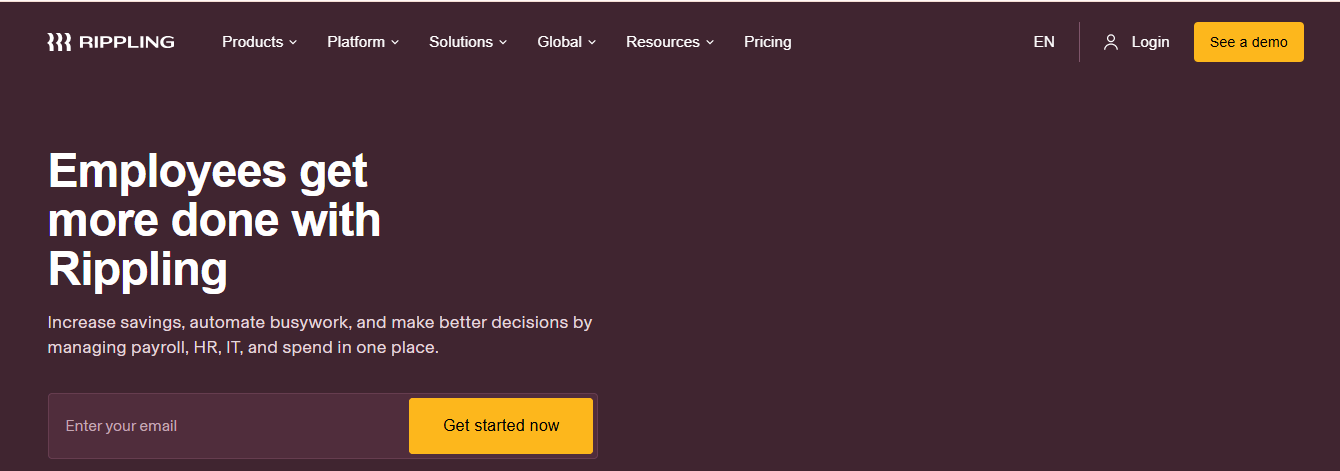
Rippling is an all-in-one HR platform that helps businesses manage both human resources and IT operations in one place. The software is easy to set up and use, which makes it ideal for companies that want quick implementation. Once installed, it automates many HR tasks from onboarding and payroll to compliance and benefits while providing a clean and intuitive interface. Rippling also connects smoothly with hundreds of business apps, helping HR teams manage everything from employee data to devices without juggling multiple tools.
Features
- Payroll and global workforce management
- Benefits administration and compliance support
- IT device and app management
- Custom workflows and data analytics
Pros
- Automates most HR and IT processes with minimal setup.
- Combines HR, payroll, and device management in one platform.
Cons
- No free trial is available.
- Pricing information is available only upon request.
Pricing
- Contact the company for a demo and quote.
Best For
- Mid-sized and growing businesses (25–500 employees), particularly tech-driven companies that want built-in integrations with development tools and prefer modern, easy-to-navigate interfaces.
2. Gusto

Gusto is a cloud-based software that helps small businesses manage payroll, employee benefits, and HR tasks. It allows users to process payroll automatically, handle tax filings, manage health insurance, and track employee hours all from one simple dashboard. Small business owners, startups, accountants, and HR teams often use Gusto to make payroll and compliance easier to handle.
Features
- Automated payroll processing with built-in tax calculation and filing
- Health insurance management, including medical, dental, and vision plans
- Integrated time tracking with clock-in and clock-out options
- Automatic calculation of employee hours, paid time off, and holidays
Pros
- Easy-to-use interface that helps small businesses manage payroll, benefits, and taxes from one place
- Comprehensive tools that make HR management simple for business owners without an HR background
- Automatically handles tax filings and benefits integration, saving time and reducing manual errors
Cons
- Customer support is mostly AI-based or email-only, which can delay issue resolution
- Limited options for handling late payroll and less effective time classification tools
- Paystub updates can be slightly delayed, making real-time clock-in and clock-out tracking less accurate
Pricing
- Simple: $24.50/month
- Plus: $40/month
- Premium: $90/month
Best For
Small businesses and startups that want a straightforward payroll system without worrying about tax mistakes. It’s ideal for new business owners looking for a dependable and easy payroll solution.
3. Paylocity

Paylocity is a cloud-based HR and payroll software that helps businesses handle payroll, benefits, and employee management in one system. It automates key HR tasks, improves accuracy, and enhances employee engagement through self-service tools. Unlike some competitors, it offers deeper integration between payroll, time tracking, and workforce analytics, giving businesses better visibility and control over their HR operations.
Features
- Benefits Administration: Employees can easily review and select their plans online or via mobile. The system sends reminders and notifications to keep enrollment on track, making the process faster and less stressful for HR teams.
- Time and Attendance: The platform automates time tracking and attendance management, eliminating manual data entry and reducing mistakes.
- Payroll Management: Paylocity automates payroll calculations, deductions, and direct deposits. It provides clear visibility into paychecks and even offers early wage access options.
- Automated Workflows: The software offers both templates and customization options, allowing organizations to automate repetitive tasks and maintain consistency in HR operations.
- Employee Self-Service: This feature gives employees control over their personal information and reduces the administrative burden on HR departments.
Pros
- Includes social collaboration tools that improve team communication
- Supports decisions with real-time workforce analytics
- Combines payroll and workforce management in one platform
Cons
- May take time for new users to get familiar with the system
- Requires setup and configuration to fit specific organizational needs
Pricing
Pricing is available upon request.
Best For
Paylocity is ideal for industries with complex requirements such as compliance management, multi-department coordination, workforce analytics, and financial oversight.
4. Deel
Deel is an all-in-one HR platform designed for businesses with global teams. It helps companies manage payroll, handle contractors, and operate as an Employer of Record in multiple countries. The platform also includes employee performance tools like 360-degree reviews and goal tracking to promote team growth and accountability. Deel is especially useful for companies hiring internationally, offering automated payroll and compliance support across different regions.
Features
- Automates payroll across 120+ currencies
- Provides localized employment contracts for compliance with regional laws
- Includes a self-service portal for employees to access documents and payment details
- Supports contractor payments and management
- Offers guided workflows for onboarding and offboarding
Pros
- Easy-to-use self-service portal for employees
- Localized contracts that meet country-specific requirements
- Automated payment system for contractors
Cons
- Basic time-tracking tools
- Limited options for leave management
Pricing
Starts at $20 per worker per month
Best For
Companies that employ or manage workers across multiple countries.
4. Deel

Deel is an all-in-one HR platform designed for businesses with global teams. It helps companies manage payroll, handle contractors, and operate as an Employer of Record in multiple countries. The platform also includes employee performance tools like 360-degree reviews and goal tracking to promote team growth and accountability. Deel is especially useful for companies hiring internationally, offering automated payroll and compliance support across different regions.
Features
- Automates payroll across 120+ currencies
- Provides localized employment contracts for compliance with regional laws
- Includes a self-service portal for employees to access documents and payment details
- Supports contractor payments and management
- Offers guided workflows for onboarding and offboarding
Pros
- Easy-to-use self-service portal for employees
- Localized contracts that meet country-specific requirements
- Automated payment system for contractors
Cons
- Basic time-tracking tools
- Limited options for leave management
Pricing
Starts at $20 per worker per month.
Best For
Companies that employ or manage workers across multiple countries.
5. Sloneek
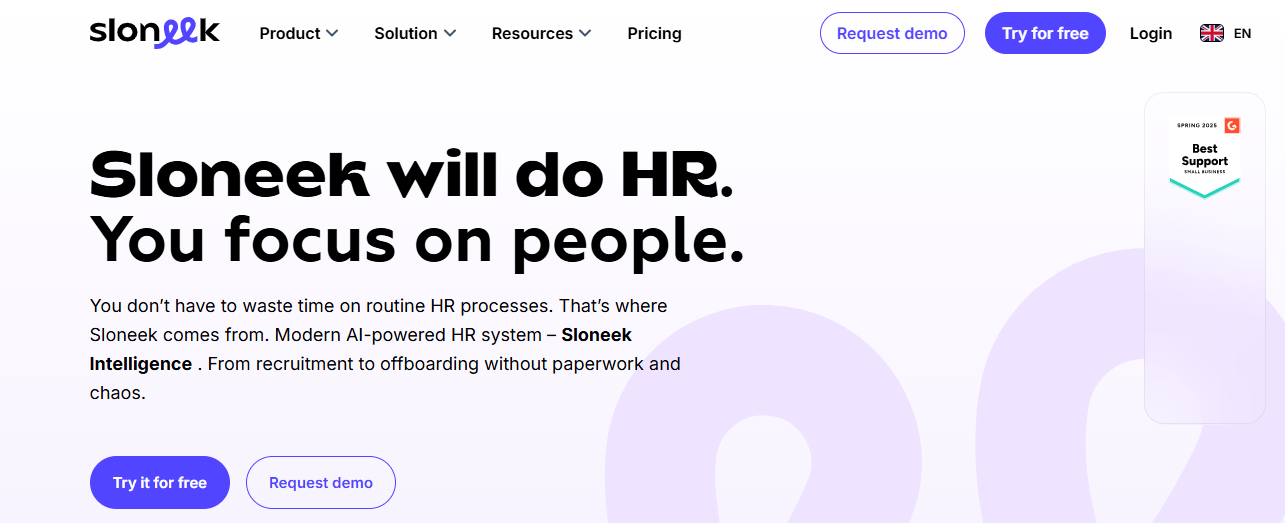
Sloneek is a cloud-based HR software designed for businesses of all sizes. It helps companies handle every stage of the employee lifecycle from onboarding to offboarding with ease. The platform includes tools for managing employee data, digital contracts, attendance, and absences. Its AI-driven features support smarter decision-making and help reduce administrative tasks. Sloneek is especially effective for hybrid and remote teams, offering specific tools for tracking work hours, managing attendance, and assigning tasks even when team members work from different locations.
Features
- Digital document management: Securely store, organize, and access employee records and contracts online.
- E-signature support: Sign and approve HR documents safely without physical paperwork.
- Automated leave management: Employees can submit leave requests and managers can approve them instantly.
- Time and attendance tracking: Monitor working hours, breaks, and absences automatically.
- Task and project management: Assign and track tasks to keep teams aligned and on schedule.
- AI automation and analytics: Get insights into HR performance and make data-informed decisions.
Pros
- Quick and simple to set up and use
- Automatically records absences and leave time
- Frequently updated to meet changing company requirements
Cons
Some users find the reports and analytics difficult to interpret
Pricing
Available upon request
Best For
Companies with hybrid or remote work setups looking for an all-in-one HR platform that handles documentation, time tracking, and employee management efficiently.
6. Lattice
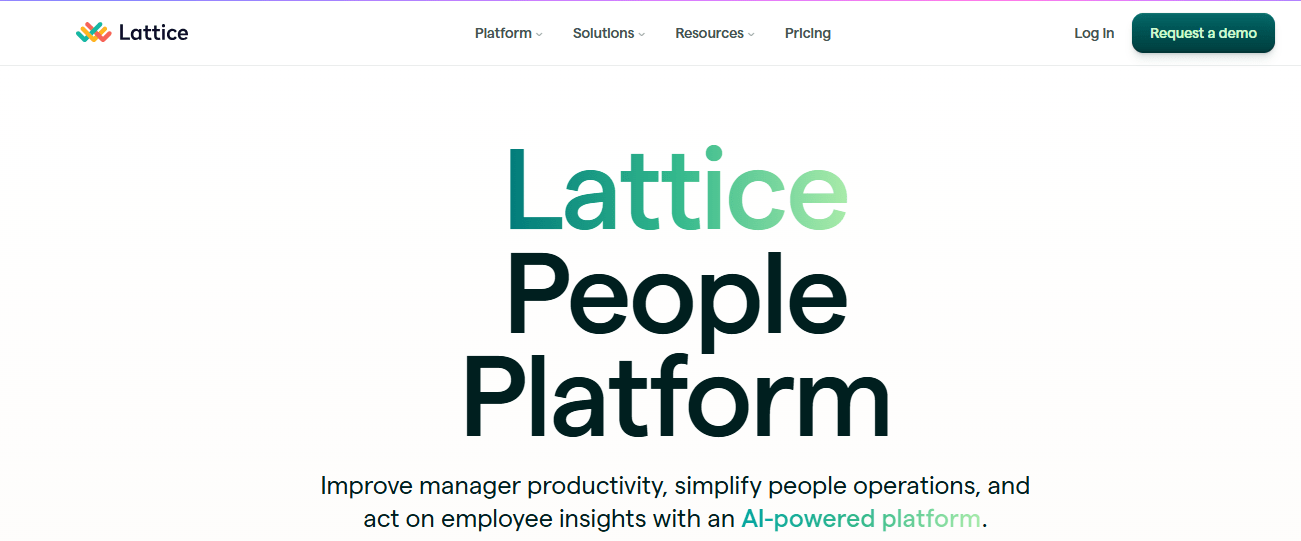
Lattice is a cloud-based performance management platform that helps HR teams and managers set goals, monitor progress, and provide ongoing feedback. It supports employee development through one-on-one meetings, regular reviews, and feedback tools that strengthen communication and performance alignment.
Features
- Performance: Enables real-time feedback with customizable review cycles, check-ins, and 1:1 meeting templates.
- Engagement: Includes anonymous surveys and quick pulse checks to measure employee satisfaction and identify workplace issues early.
- Compensation: Provides salary planning, equity management, and pay transparency tools, with market benchmarks to guide fair compensation decisions.
- OKRs & Goals: Connects team and individual goals with company-wide objectives to keep everyone accountable and focused.
- Grow: Supports professional growth through skill insights and development plans for both employees and managers.
Pros
- Easy-to-use interface that encourages team adoption.
- Promotes a strong culture of feedback through continuous reviews.
- Makes it simple to align individual and team goals with company targets.
Cons
May experience slight delays when tracking performance data.
Teams might need an adjustment period to learn all available tools.
Pricing
Starts at $11 per seat/month
Best For
Organizations that want to strengthen employee engagement, goal alignment, and career growth through structured performance management.
7. Workday
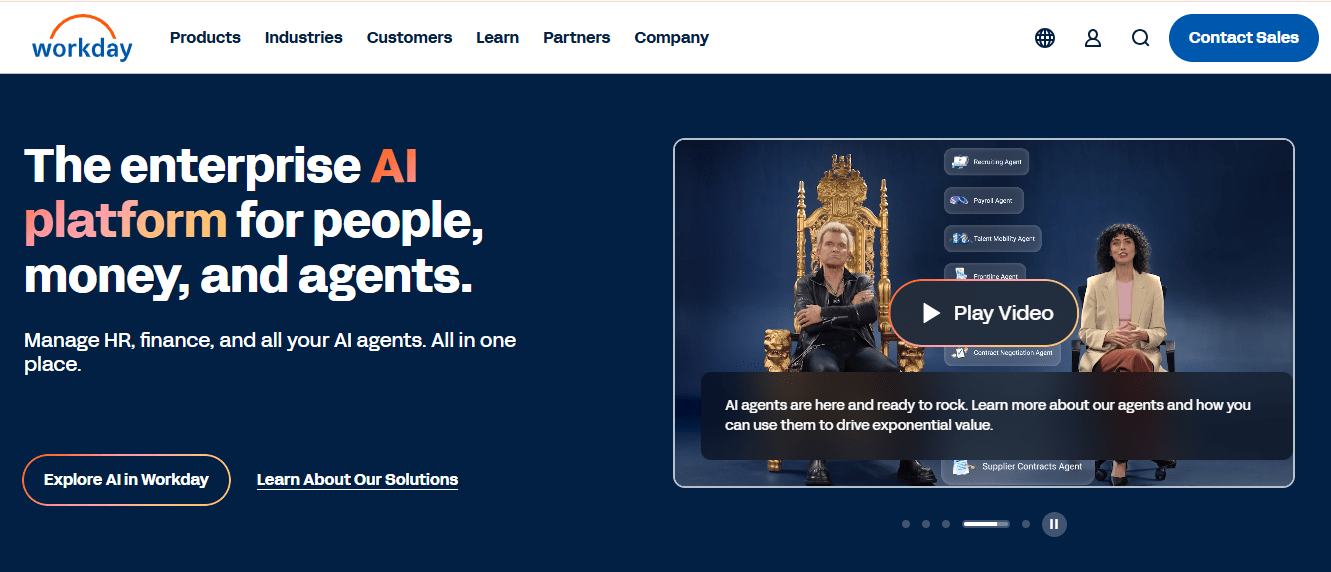
Workday HCM is a cloud-based software that helps large organizations manage both their people and financial information in one system. It provides a consistent experience across all departments, helping HR and finance teams work together more efficiently. With advanced tools for talent management and workforce analysis, Workday helps companies make smarter decisions based on real-time data. Many HR and IT teams use Workday to automate processes, ensure compliance, and improve overall business performance.
Features
- Unified Cloud System: Combines HR, finance, and analytics into one platform, removing data gaps and ensuring real-time information access.
- AI-Based Insights: Uses artificial intelligence to offer predictive workforce insights, detect unusual trends, and recommend hiring or retention strategies.
- Global Scalability: Handles international operations with localized payroll, compliance support, and currency options.
- Employee Self-Service: Allows employees to update personal details, request leave, set goals, and check benefits from mobile or desktop devices.
- Automated Workflows: Simplifies processes like onboarding, approvals, and compliance tracking to reduce manual work.
- Integration Options: Connects with over 600 external applications through APIs and pre-built connectors.
Pros
- Easy access to documents, pay slips, and expense records from any device.
- Convenient platform to manage pay, time off, and organizational reporting in one dashboard.
- Speeds up employee onboarding and recruitment.
- Makes tracking attendance and work hours simple.
- Reduces repetitive HR tasks through automation.
Cons
- The job search feature provides limited detail, requiring extra effort to find specific roles.
- Navigation can sometimes be less intuitive compared to other platforms.
Pricing
Available upon request.
Best For
Large organizations seeking a unified solution for HR, finance, and workforce management.
8. HiBob
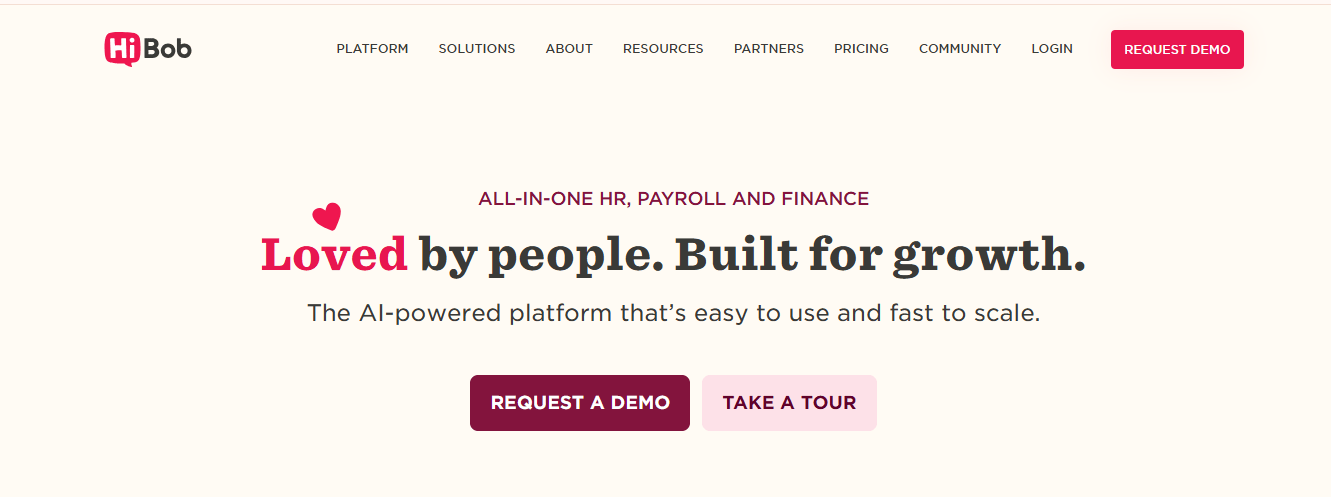
HiBob is a cloud-based Human Resources Information System (HRIS) built for growing and modern organizations. It focuses on creating a strong workplace culture while simplifying everyday HR operations. The software combines essential HR functions with tools that encourage employee connection and engagement. It is ideal for tech startups, creative agencies, and rapidly expanding businesses that want efficient HR processes without the heavy setup of enterprise systems. HiBob primarily serves HR managers, IT administrators, and operations teams looking to automate tasks and keep employees engaged across remote and hybrid teams.
Features
- Employee Database & Self-Service: Stores employee profiles in one place and allows staff to update their own details, reducing administrative effort and improving data accuracy.
- Onboarding Automation: Builds customized onboarding workflows for various roles and regions, helping new hires complete paperwork early and feel connected from day one.
- Performance Management: Enables flexible review cycles with 360-degree feedback, peer selection, and career tracking to support fair evaluations and continuous growth.
- Manages leave requests, attendance, and approvals automatically, while integrating vacation calendars for better workforce planning.
- Offers dashboards with editable templates and trend insights to support informed HR decisions and long-term planning.
- Encourages team connection through recognition programs, surveys, and communication tools that promote a positive workplace culture.
Pros
- Includes a built-in feedback and recognition system
- Supports comprehensive performance management
- Provides valuable insights through HR analytics
Cons
- Customizing workflows can be challenging
- Advanced analytics features are somewhat limited
Pricing
HiBob offers a subscription-based pricing plan that varies depending on each company’s size and requirements.
Best For
Companies that want to strengthen their culture and improve employee engagement while managing HR tasks efficiently.
9. Namely
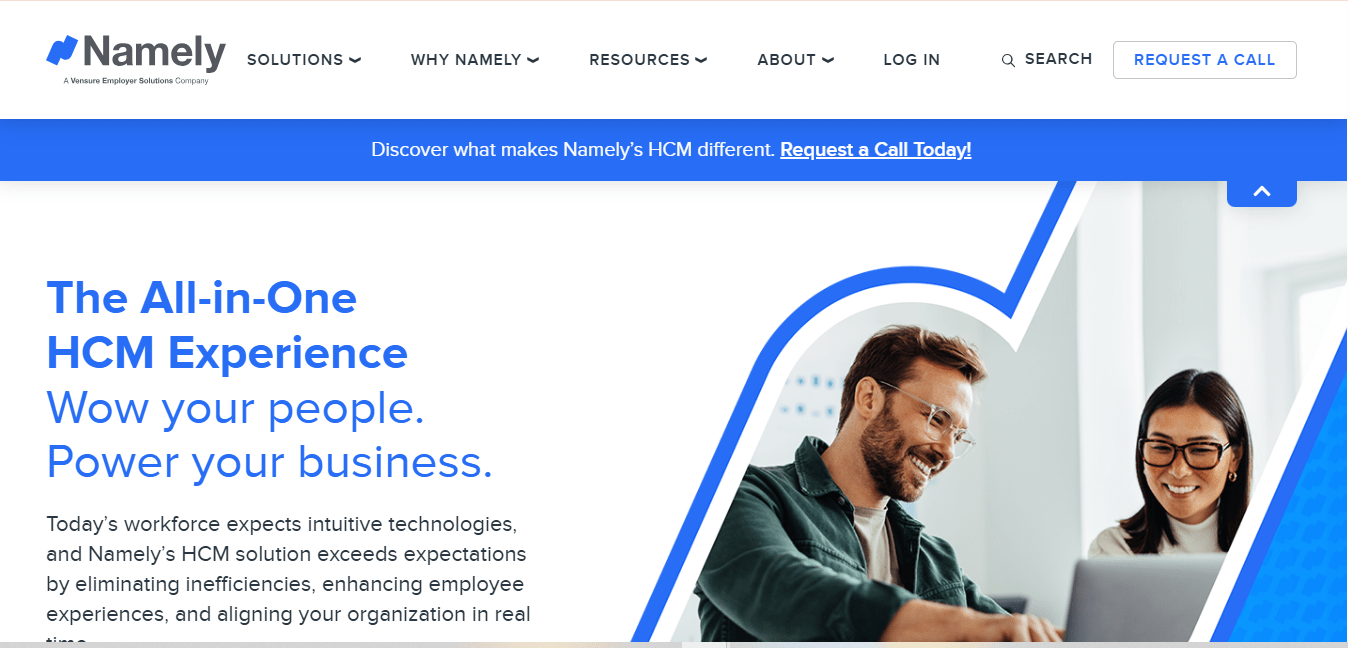
Namely HR is a cloud-based human resource software created for mid-sized companies. It combines payroll, benefits, talent management, and compliance in one platform. With Namely, teams can manage payroll and HR tasks together, making everyday operations easier. The platform also promotes employee growth through performance reviews and goal tracking, making it a good fit for organizations focused on staff development and engagement.
Features
- Payroll and benefits management in a single system
- Performance reviews and goal-setting tools to support employee growth
- Compliance management that keeps your business updated with regulations
- Customizable reporting options for specific organizational needs
- Social news feed to boost communication and employee engagement
Pros
- Encourages stronger employee engagement
- Includes tools for tracking goals
- Provides built-in performance review features
Cons
- Can be difficult for beginners to navigate
- Offers limited reporting functions
Pricing
Namely’s pricing is available on request, but some sources report it starts at around $9 per user per month.
Best For
Companies that prioritize performance management and employee development.
10. Leapsome
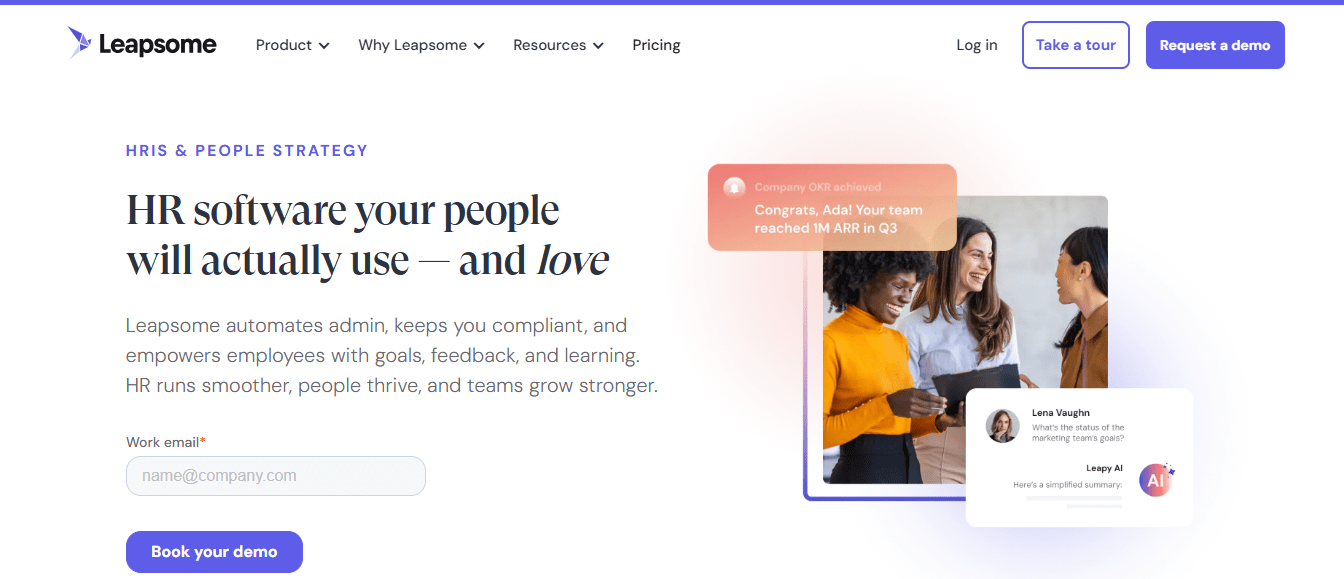
Leapsome is a performance management platform that simplifies feedback collection and performance reviews to enhance employee growth. It’s designed for modern, tech-driven teams—especially in fast-moving industries such as startups and technology firms—where ongoing feedback and adaptability are essential. Leapsome encourages a culture of learning and development, enabling employees and teams to perform at their best.
Features
- Goals and OKRs Management: This feature keeps everyone focused on shared objectives by setting measurable targets that help teams stay organized and accountable.
- The 360° feedback feature offers a full picture of an employee’s performance, promoting professional growth and self-awareness.
- This feature tracks key competencies across the organization and provides a clear system for building employee capabilities.
- Support new hires with onboarding tools that explain their roles and introduce company culture.
- Gather insights into employee satisfaction and engagement levels. These surveys help management understand team morale and address concerns before they affect performance.
Pros
- Simplifies performance management processes
- Includes engagement and feedback tools in one system
- Offers strong learning and development options
- Provides customizable review templates
- Delivers useful people analytics for informed decisions
Cons
- Some users find the initial setup challenging
- Advanced tools may require time to master
Pricing
Leapsome uses a modular pricing structure. Costs vary depending on the specific tools and processes a company chooses to implement for its performance and development needs.
Best For
Tech-savvy teams and fast-growing organizations seeking an adaptable system for performance reviews, goal tracking, and employee development.
11. Paycom
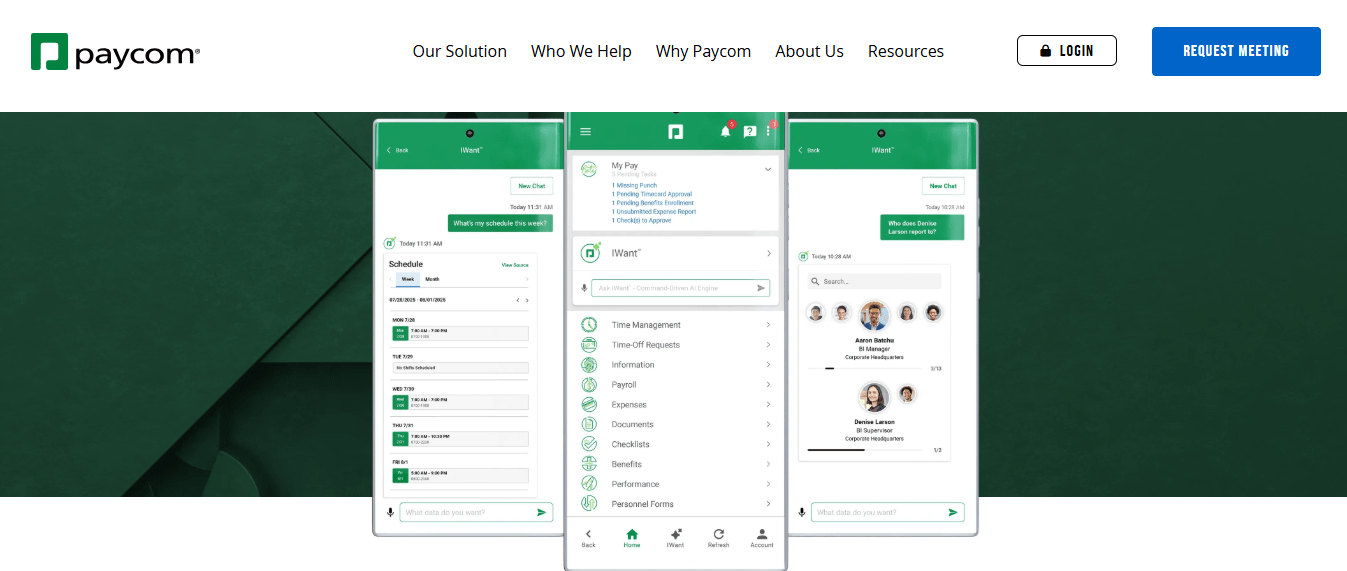
Paycom simplifies HR and payroll management with an all-in-one, automated system that puts employees first. Its single database stores all HR and payroll information in one location, eliminating the errors that come with using separate systems. The platform supports the entire employee lifecycle from hiring and onboarding to performance management and payroll processing. It also includes tools for attendance tracking, scheduling, benefits administration, and labor allocation.
Features
- Payroll Processing: Calculates payroll automatically to ensure accurate and timely payments while minimizing errors.
- Employee Self-Service: Allows employees to view and update their personal information, reducing the workload for HR staff and improving data accuracy.
- Time and Attendance Tracking: Monitors work hours in real time through digital time clocks, helping to manage overtime and verify payroll accuracy.
- Benefit Administration: Lets HR teams oversee employee benefits and enrollments directly within the system for easier management.
- Tax Management: Handles tax calculations and filings automatically, keeping your business compliant with federal and state regulations.
Pros
- Easy-to-use interface that boosts efficiency.
- Wide coverage of HR and payroll functions in one platform.
- Simplifies payroll through tools like Beti for better accuracy and control.
Cons
- The initial setup process can take time.
- Some users may find limited customization options compared to other HR platforms.
Pricing
Available upon request.
Best For
Businesses seeking a unified HR and payroll platform that automates key processes while keeping employees engaged and informed.
Conclusion
BambooHR is a reliable option for small and mid-sized businesses that want an easy-to-use platform for handling employee information and HR tasks. But as companies grow, they often need tools that offer more flexibility, stronger data insights, and global capabilities. The options featured in this list offer those added benefits including deeper analytics, automated payroll, performance tracking, and international compliance all while staying budget-friendly.
In the end, the best HR software adapts as your business evolves, supports your team, and provides real value without overspending. These affordable BambooHR alternatives help you manage your workforce more effectively and keep your operations running smoothly.

